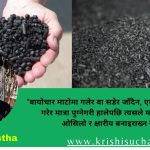Barley: Introduction, nutritional value and health benefits

Introduction
Barley (Hordeum vulgare), a member of the grass family, is a major cereal grain grown in in temperate climate globally. It was one of the first cultivated grains, particularly in eurasia as early as 10,000 years ago. Though it grows wild in regions of western Asia and northeast Africa. Barley has been used as animal fodder, as a source of fermentable material for beer and certain distilled beverages, and as a component of various health food. It is used in soups and stews, and in barley bread of various cultures. Barley grains are commonly made into malt in a traditional and ancient method of preparation.
Barley is a cereal grain with a chewy texture and mild, nutty flavor. Barley is the fourth most produced grain worldwide — after corn, rice and wheat.
In nepal, It is the most important winter crop in mountainous region. It is grown in different cropping patterns in both khet ( irrigated lowlands )and bari ( non-irrigated uplands ) conditions . Barley landraces dominate cultivation and grows in the low fertility rainfed environment of the high hills.
Nutritional value
Barley is a whole grain that is packed with nutrients. It doubles in size when it cooks.One-half cup (100 grams) of uncooked, hulled barley contains the following nutrients:
- Calories: 354
- Carbs: 73.5 grams
- Fiber: 17.3 grams
- Protein: 12.5 grams
- Fat: 2.3 grams
- Thiamine: 43% of the Reference Daily Intake (RDI)
- Riboflavin: 17% of the RDI
- Niacin: 23% of the RDI
- Vitamin B6: 16% of the RDI
- Folate: 5% of the RDI
- Iron: 20% of the RDI
- Magnesium: 33% of the RDI
- Phosphorus: 26% of the RDI
- Potassium: 13% of the RDI
- Zinc: 18% of the RDI
- Copper: 25% of the RDI
- Manganese: 97% of the RDI
- Selenium: 54% of the RDI
Health benefits
- Rich in Many Beneficial Nutrients
Whole grain barley contains a range of vitamins, minerals and other beneficial plant compounds. Soaking or sprouting your barley can improve absorption of these nutrients. - Reduces Hunger and May Help You Lose Weight
Barley contains soluble fiber, which reduces hunger and enhances feelings of fullness. It may even promote weight loss. - Insoluble and Soluble Fiber Content Improves Digestion
Barley’s high fiber content helps food move through your gut and promotes a good balance of gut bacteria, both of which play important roles in digestion. - May Prevent Gallstones and Reduce Your Risk of Gallbladder Surgery
The type of insoluble fiber found in barley may prevent the formation of gallstones, helping your gallbladder function normally and reducing your risk of surgery. - Beta-Glucans May Help Lower Cholesterol
The type of insoluble fiber found in barley appears to reduce cholesterol levels by preventing its formation and increasing its excretion through the feces. - May Reduce Heart Disease Risk
Regularly adding barley to your diet may reduce risk factors for heart disease, such as high blood pressure and “bad” LDL cholesterol. - Magnesium and Soluble Fiber May Protect Against Diabetes
Whole-grain barley may help improve insulin production and reduce blood sugar levels, both of which may reduce the likelihood of type 2 diabetes. - May Help Prevent Colon Cancer
Fiber and other beneficial compounds found in barley may fight off certain types of cancer, particularly those of the colon. However, more research is needed. - Versatile and Easy to Add to Your Diet
Barley is cheap, edible warm or cold and easily added to a variety of savory and sweet dishes.
Conclusion:
Eating whole grains, such as hulled barley, has been linked to a decreased risk of chronic diseases and death. Hulled barley contains fiber and other plant chemicals that are beneficial for health.
Writer: Anuj khatri (Student, Bsc. Ag 2nd Semester IAAS Paklihawa Campus)

 दिल्लीको होटलमा बसेर क्यानडा र अमेरिकामा मानव तस्करी
दिल्लीको होटलमा बसेर क्यानडा र अमेरिकामा मानव तस्करी  अनलाइन जुवा खेलाएर काभ्रेका अनिलले गरे दुई अर्बको कारोबार
अनलाइन जुवा खेलाएर काभ्रेका अनिलले गरे दुई अर्बको कारोबार  मुख्यमन्त्री सोडारीले विश्वासको मत लिन सुदूरपश्चिमको प्रदेश सभा बैठक आव्हान
मुख्यमन्त्री सोडारीले विश्वासको मत लिन सुदूरपश्चिमको प्रदेश सभा बैठक आव्हान  अफगानिस्तानमा बाढीबाट ३१५ भन्दा बढीको मृत्यु
अफगानिस्तानमा बाढीबाट ३१५ भन्दा बढीको मृत्यु  सुँगुरको मिर्गौला प्रत्यारोपण गरिएका रिचर्डको निधन
सुँगुरको मिर्गौला प्रत्यारोपण गरिएका रिचर्डको निधन 


